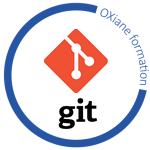
One by one, major open-source projects are adopting Git as their version manager to replace CVS or Subversion. This migration is not related to a fashion effect. Git, because of its radically different conception, opens new perspectives to development teams. The two main advantages are performance and flexibility.
Git is a distributed version manager: each developer has a local copy of the history of the sources, hence the gain in performance and the possibility of offering functionalities not possible to implement with centralized managers such as CVS or Subversion.
The first obstacle to the adoption of Git in companies is the lack of integration with development environments. This problem is solved on the Eclipse side with the tools proposed by the official EGit project.
The second obstacle is the need for developers to understand the Git philosophy and in particular to forget certain reflexes linked to the use of CVS or Subversion.

